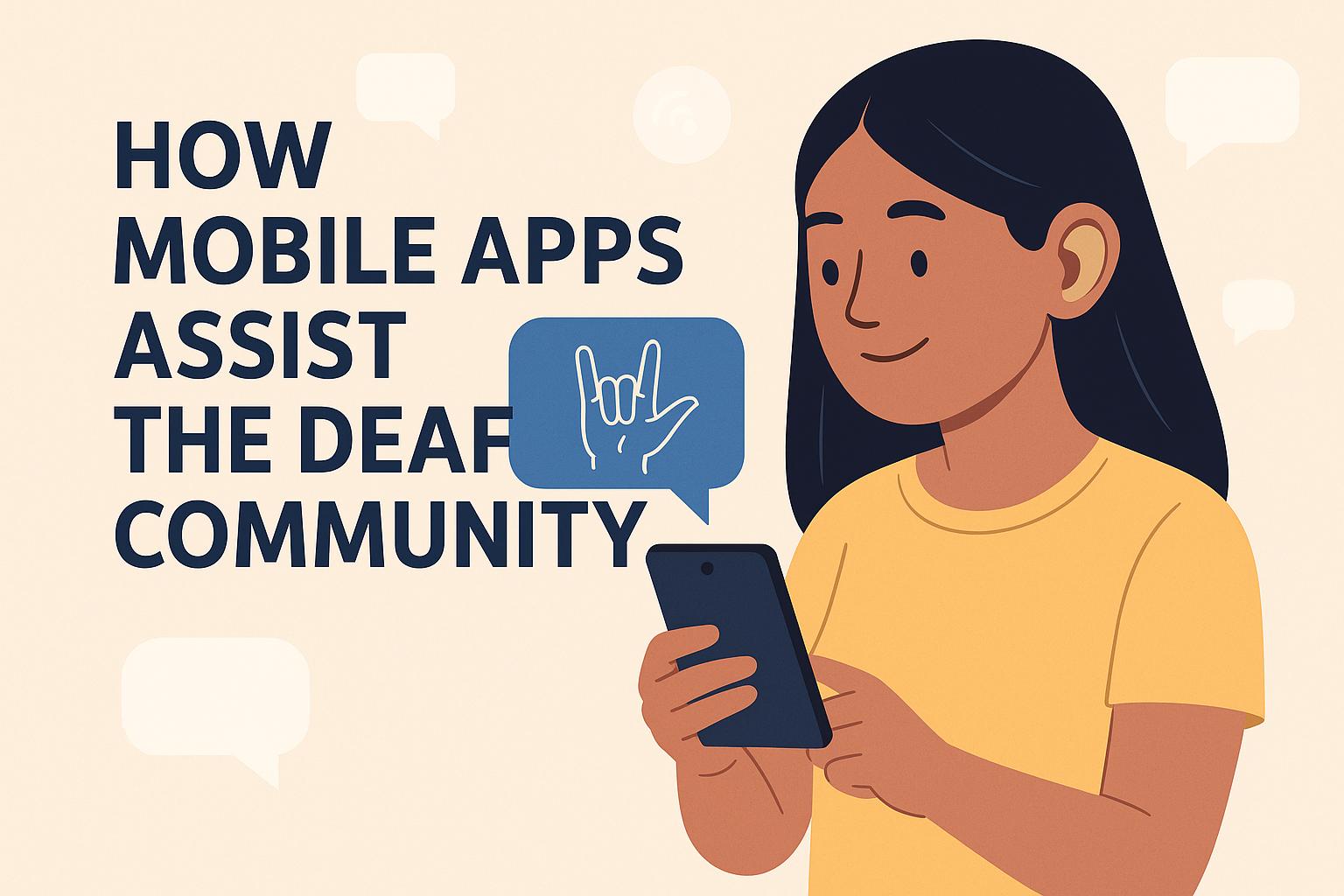The Role of Mobile Apps in Enhancing Accessibility
Mobile applications have become pivotal in transforming how the deaf community engages with the world, offering solutions to bridge the communication gap that often exists between deaf and hearing individuals. This article explores the various ways mobile apps are being utilized to assist the deaf community in their everyday lives, emphasizing the technologies and features that are redefining accessibility.
Communication Solutions
Effective communication between deaf and hearing individuals has traditionally been challenging. However, mobile apps have developed innovative solutions to address this issue through the use of real-time transcription and sign language translation services.
Real-time transcription apps convert spoken words into text instantaneously, allowing deaf users to follow conversations in real time without any delay. This functionality not only facilitates casual conversations but also enables better communication in professional settings, educational environments, and social gatherings.
Moreover, artificial intelligence (AI) in mobile apps has made it possible to interpret sign language through the use of a smartphone camera. These apps can accurately convert gestures into spoken or written language, vastly improving interpersonal communication. Such tools ensure that interactions between deaf and hearing people are smoother and more effective, ultimately promoting inclusiveness in various social contexts.
Access to Educational Resources
Education remains one of the essential areas where mobile apps have had a profound impact. Specialized educational applications cater specifically to deaf students by offering interactive learning tools that significantly enhance their educational experience. These tools usually include a range of visual aids, videos, and graphics to facilitate an in-depth understanding of educational content.
Through the inclusion of multimedia elements like visual cues and illustrated instructions, these apps engage students more effectively than traditional text-based learning. This interactive approach ensures that students with hearing impairments can grasp concepts more easily, enabling them to participate fully in their educational journeys.
Another advantageous feature of educational apps for the deaf community is the ability to learn sign language at their own pace. Apps offering structured courses with video demonstrations allow users to incrementally enhance their skills. This flexibility means users can adapt their learning according to their schedules and abilities, encouraging a personalized educational experience.
Social Connectivity and Networking
Remaining socially connected is crucial for maintaining a sense of belonging and emotional well-being. Mobile apps have risen to the occasion here, providing the deaf community with specialized social networking platforms that facilitate interaction among users with similar experiences and challenges.
These platforms are particularly designed with inclusive features to support meaningful communication. For instance, video calling capabilities with integrated sign language translation ensure that users can communicate freely without language barriers. Additionally, message boards and discussion forums within these platforms encourage community building and provide a space to share experiences, insights, and support.
By fostering an online environment where deaf users can connect and share, these apps contribute profoundly to creating a world where everyone’s voice is heard, regardless of their hearing ability.
Navigation and Public Service Accessibility
Navigating public spaces and accessing essential services often present challenges for many deaf individuals, with crucial information frequently conveyed audibly. In response, mobile apps have emerged with capabilities designed to overcome these barriers through features like visual alerts and text-based notifications. These functionalities are instrumental in informing users of important public announcements, emergencies, and services.
For instance, apps can provide real-time alerts about public transportation schedules or safety warnings, ensuring that deaf individuals receive the same information as their hearing counterparts. Additionally, navigation apps with route guidance tailored specifically for the deaf community offer custom alerts and detailed, text-based directions, supporting users as they move through both urban and rural environments efficiently and safely.
Future Developments
The ongoing evolution of mobile apps for the deaf community is closely tied to the advancement of technologies like artificial intelligence and machine learning. These technologies enhance the capacity of apps to learn user behavior and preferences, offering more personalized and intuitive experiences. As research and development in these areas progress, we can expect mobile apps to become increasingly sophisticated and capable of offering even greater levels of accessibility.
Innovative applications of machine learning in speech and sign language recognition are examples of future developments poised to offer refined communication solutions. Such technologies will continue to evolve, promising to deliver more advanced interpretations, quicker processing times, and broader language support, thus opening new opportunities for interaction and accessibility.
In conclusion, the role of mobile apps in enhancing the lives of deaf individuals is essential. By offering solutions tailored to improve communication, education, social connectivity, and public accessibility, these apps serve as indispensable tools in nurturing a more inclusive and independent society. The advancement of digital technologies holds the promise of further breaking down barriers, fostering empowerment and inclusivity for the deaf community in all spheres of life.
